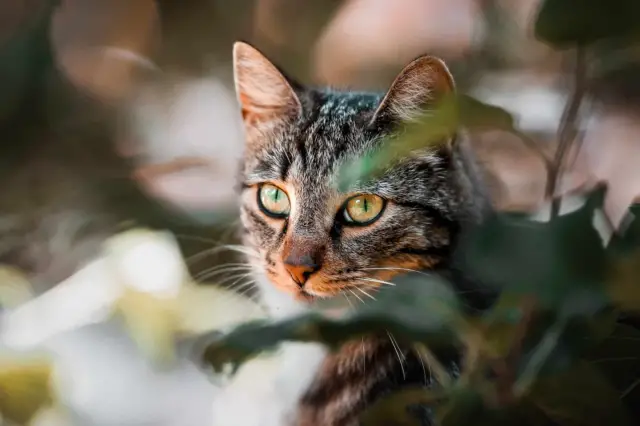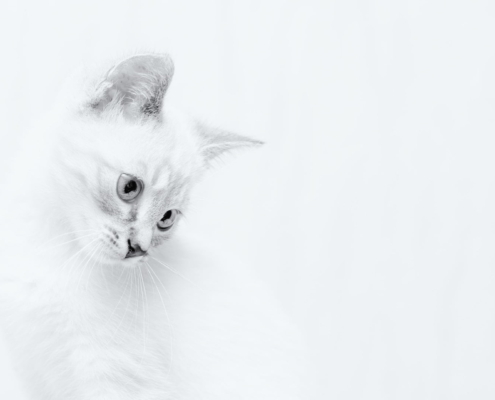
Cats have always been admired for their incredible speed and agility. Whether it’s a domestic house cat or a wild cheetah, their ability to move swiftly and gracefully is truly remarkable. But what makes cats so fast? In this article, we will delve into the fascinating reasons behind their speed and explore the various factors that contribute to this incredible phenomenon.
The anatomy of a fast cat
To understand why cats are so fast, it is essential to examine their anatomy. Cats have a unique skeletal structure that allows for increased flexibility and agility. Their long, slender bodies, muscular limbs, and highly flexible spines enable them to move with lightning speed. Additionally, their retractable claws provide them with better grip and traction, allowing for quick acceleration and sharp turns.
Furthermore, cats possess a specialized muscle structure. Their muscles consist mainly of fast-twitch fibers, which contract rapidly and generate high amounts of force. This muscle composition, combined with their lightweight bodies, allows cats to reach impressive speeds in a matter of seconds.
Evolutionary advantages of cat speed
The extraordinary speed of cats is not merely a result of their anatomy; it is also a product of millions of years of evolution. Cats are natural predators, and their ability to move swiftly has been crucial for survival. Their speed allows them to efficiently hunt their prey, ensuring their survival in the wild.
Over time, cats that were faster and more agile had a higher chance of catching their prey and securing their next meal. This selective pressure favored the evolution of faster cats, gradually enhancing their speed and agility. As a result, modern-day cats have inherited these exceptional abilities from their ancestors.
Hunting techniques and speed
Cats employ various hunting techniques that make their speed even more effective. One such technique is stalking, where cats silently approach their prey, carefully observing their movements before launching into a lightning-fast chase. Their ability to maintain a low profile and move stealthily enables them to surprise their prey and increase their chances of a successful hunt.
Another hunting technique utilized by cats is the ambush. Cats have an incredible ability to hide and wait patiently for the perfect moment to strike. Once they spot their prey, they unleash their speed in a sudden burst of energy, giving their prey little chance to escape.
Cat breeds known for their speed
While all cats possess impressive speed, certain breeds are particularly renowned for their swiftness. The Savannah cat, for example, is a hybrid breed known for its exceptional speed and agility. This breed, a cross between a domestic cat and an African serval, inherits the long legs and slender body of the serval, allowing for incredible speed and vertical leaps.
Another breed known for its speed is the Egyptian Mau. This ancient breed has a naturally occurring “M” marking on its forehead and is one of the fastest domestic cat breeds. With their lean bodies and strong muscles, Egyptian Maus can reach remarkable speeds, making them formidable hunters.
Factors that contribute to cat speed
Several factors contribute to the speed of cats. One of the most important factors is their size. Smaller cats tend to be faster and more agile than larger cats due to their lighter body weight and compact size. Additionally, the breed and individual genetics play a role in determining a cat’s speed. Some cats are genetically predisposed to be faster than others, just as some humans are naturally more athletic.
The environment in which a cat is raised also influences its speed. Cats that grow up in open spaces, such as farms or rural areas, have more opportunities to run and develop their speed. On the other hand, cats that spend most of their time indoors may not have the same level of physical activity, which can affect their speed and agility.
Cat speed in comparison to other animals
While cats are undeniably fast, there are other animals that can rival or even surpass their speed. One such example is the cheetah, which holds the title for the fastest land animal. With its slender body, long legs, and flexible spine, the cheetah can reach speeds of up to 70 miles per hour in just a few seconds. This incredible acceleration makes the cheetah the ultimate sprinter of the animal kingdom.
In comparison, domestic cats can reach speeds of up to 30 miles per hour, making them impressively fast for their size. However, they are no match for the cheetah when it comes to pure speed. Nevertheless, domestic cats possess other qualities, such as agility and quick reflexes, which make them formidable hunters in their own right.
Fascinating facts about cat speed
Did you know that cats can turn mid-air while running at high speeds? This incredible acrobatic ability allows them to change directions swiftly and efficiently while chasing their prey. Additionally, cats have an extraordinary sense of balance, which enables them to maintain their speed even on narrow surfaces or unstable terrain.
Another fascinating fact about cat speed is their ability to accelerate rapidly. Cats can go from a standing position to full speed in just a few strides. This explosive burst of energy is a testament to their incredible power and agility.
Training and exercises to enhance cat speed
While cats are naturally fast, there are ways to enhance their speed through training and exercises. One effective method is to engage cats in interactive play sessions. Toys that require chasing and pouncing can stimulate a cat’s natural hunting instincts and encourage them to sprint and move quickly.
Additionally, providing cats with vertical spaces, such as cat trees or shelves, can promote their agility and speed. Cats love to climb and jump, and having access to elevated surfaces allows them to practice their acrobatic skills and improve their overall speed.
Conclusion
Cats are truly remarkable creatures when it comes to speed and agility. Their unique anatomy, evolutionary advantages, and hunting techniques all contribute to their incredible swiftness. Whether it’s a domestic cat zooming around the house or a cheetah sprinting across the savannah, the speed of cats never fails to captivate us. So next time you witness a cat in full stride, take a moment to appreciate the fascinating reasons behind their lightning-fast movements.
If you enjoyed my article, I would appreciate you sharing it with your network.

Sima Ndlebe
Sima writes for CatBuzz. He is interested in Cats, Health and Fitness, and Entrepreneurship.
Published: 25 October 2023



